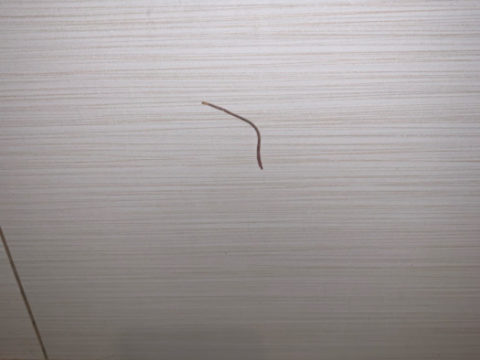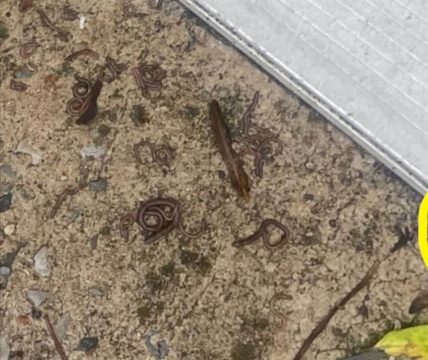Segmented worms are placed in the phylum Annelida, which consists of over 12,000 species of segmented worms grouped into three classes. The three classes comprise freshwater worms and earthworms, marine worms, and leeches. Annelids have the unique ability to inhabit a variety of unusual places such as inside of other spineless or invertebrate animals (such as sponges) and they even live in cylinders or tubes that are actually produced by their own systems and discharged around their bodies. The Feather Duster Worm, for example, secretes a spacious leather-like tube while the Calcareous Tube Worm secretes a hard calcium carbonate tube. Annelids also live in other protected environments such as sand, muddy areas and rock chasms.
Annelid bodies are characterized by segments. Each segment contains a compartment of the coelom or body cavity, with its internal organs, and a part of the body wall. The body wall consists of tough muscles and short rigid hairs collectively called “setae.” These tough muscles are used for swimming from place to place and for crawling while the setae help to keep the annelid inside its cylinder or they help to grip dirt, sand and soil.
You can’t tell by looking at them, but Annelids do have a circulatory system, a digestive system and a nervous system. The blood of an annelid can be either red or green in color or no color at all – it depends on the species. The digestive system or gut can be found on the underside of annelids and it extends down the middle from the mouth to the head. Waste is released through openings or ducts throughout the body cavity. The nervous system is made up of sense organs including tentacles and taste buds as well as eyes and statocysts (organ of balance). Non-aquatic annelids do not have a respiratory system as respiration takes place through the body wall and some aquatic annelids do have gills for breathing.
So how do annelids reproduce? This can be a little confusing. Depending on the species, annelids can reproduce asexually or sexually. Asexual reproduction takes place through a method called fission. During fission, the rear end of the body splits from the rest of the body to form a new annelid. Earthworms do not have the ability to reproduce this way, but they do have the ability to regenerate their posterior segments. Sexual reproduction takes place by species that are hermaphroditic (some earthworms and many leeches) or species that have separate females and males. During sexual reproduction, fluids are transferred from the male pore to the female ovipore. Annelids tend to mate when conditions are moist or following a rain, meaning they may mate quite frequently throughout the year.
Often misunderstood, or appreciated only for their garden-enhancing or fish-baiting qualities, annelids are some of the most fascinating creatures on – or under – the earth!
Recommended Reading (click on the picture for details):
All About Worms is always free, always reader-supported. Your tips via CashApp, Venmo, or Paypal are appreciated! Receipts will come from ISIPP Publishing.
















